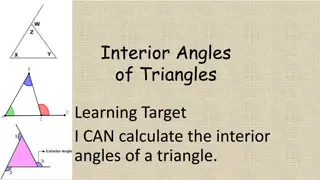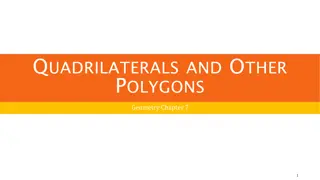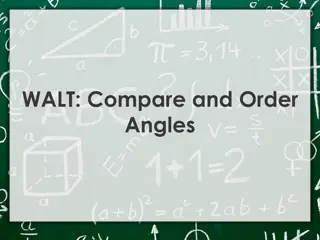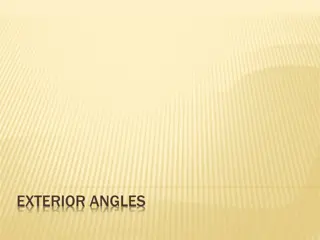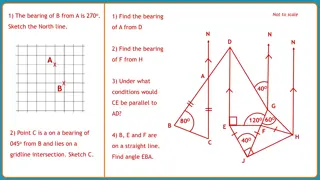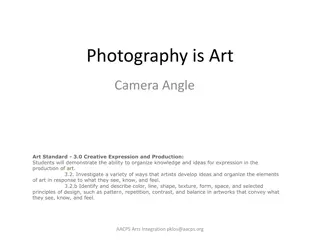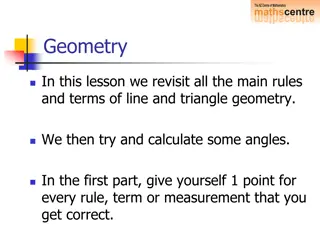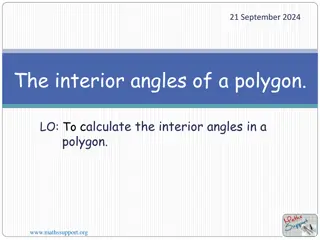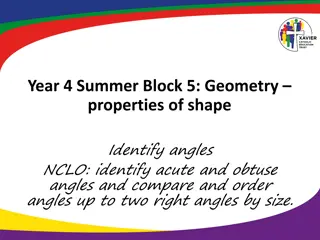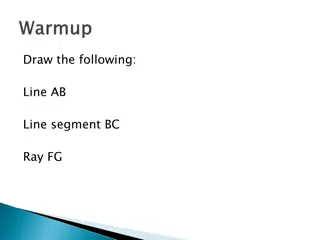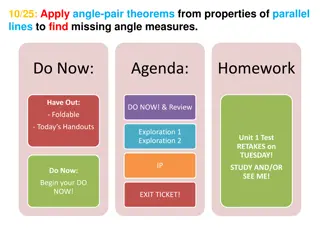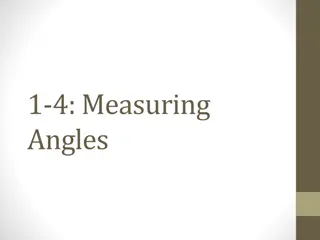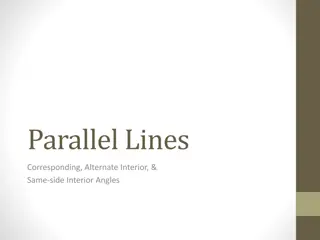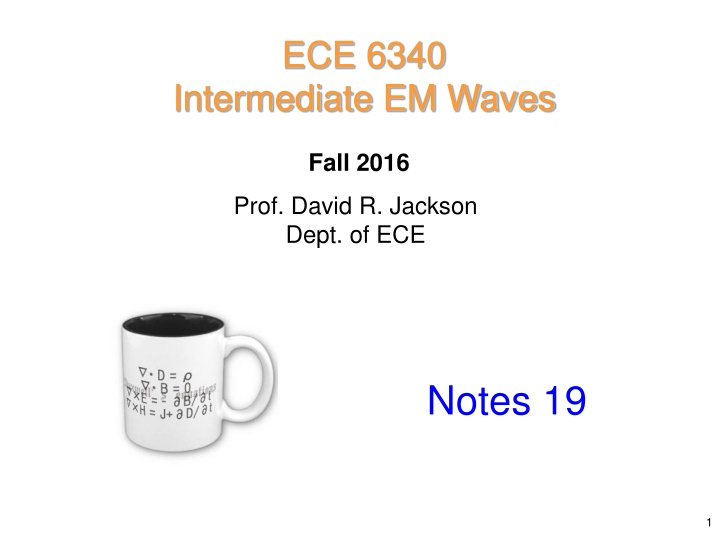
Critical Angle in Electromagnetic Wave Propagation
Explore the concept of critical angle in electromagnetic waves, how it applies to different materials, and what happens beyond the critical angle in wave propagation scenarios. Learn about the polarization considerations and power flow dynamics associated with critical angle phenomena.
Download Presentation

Please find below an Image/Link to download the presentation.
The content on the website is provided AS IS for your information and personal use only. It may not be sold, licensed, or shared on other websites without obtaining consent from the author. If you encounter any issues during the download, it is possible that the publisher has removed the file from their server.
You are allowed to download the files provided on this website for personal or commercial use, subject to the condition that they are used lawfully. All files are the property of their respective owners.
The content on the website is provided AS IS for your information and personal use only. It may not be sold, licensed, or shared on other websites without obtaining consent from the author.
E N D
Presentation Transcript
ECE 6340 Intermediate EM Waves Fall 2016 Prof. David R. Jackson Dept. of ECE Notes 19 1
Critical Angle Assume lossless materials = = , 1,2 n i i ri ri i n1 y t n n n2 2 1 z Snell s law: n n = = 1 sin sin n n sin sin 1 t i 1 2 i t 2 2
Critical Angle t= 90o At the critical angle ( i = c): n n n n n n = = = 1 sin sin 1 sin 1 1 2 so c i c 1 2 2 c n1 y t n n n2 2 1 z 3
Critical Angle Notes: The critical angle applies to any polarization. The critical angle is only defined for lossless materials. A critical angle exists only when going from a higher to a lower density medium (n1 > n2 ). 4
Beyond Critical Angle Let s examine the transmitted angle: n n = 1 sin sin 1 t i 2 n n t =complex sin 1 1 Assume i c i 2 ( ) = = = = o sin sin sin sin 90 k k k k k k 1 1 2 2 2 y i c tc yk k so 2 5
Beyond Critical Angle (cont.) Note: The power flow in the upper region is horizontal. No power crosses the boundary yk k 2 = = = j 2 2 2 2 k k k j k k 2 2 2 2 z y y z Region 1 Power flow y Region 2 z Note: The power flow in the lower region is horizontal, and decays with z. = + = yk yk ( z ) k j 2 2 y z y 2 6
Beyond Critical Angle (cont.) i c Z 1 01 = j k 2 2 z z Z isimaginary 02 T Z = 1 02 All of the incident power is reflected 7
Beyond Critical Angle (cont.) n n Determine the transmitted angle t : = sin sin 1 1 t i 2 = + x jy Let t (real) Use n n = + ) sin cosh = + = sin sin( cos sinh x sin 1 x jy x y j y 1 t i 2 = /2 x y = 0 or must use +sign x = /2 Not possible n n n n = = cosh sin 1 y 1 sin sin 1 x 1 i i 2 2 8
Beyond Critical Angle (cont.) n n = cosh sin y 1 i 2 n n = 1 cosh sin y 1 i 2 n n = 1 cosh sin j 1 Hence t i 2 x 2 jy 9
Beyond Critical Angle (cont.) n n = 1 cosh sin j 1 t i 2 2 Choose + sign to obtain correct value for kz2: ( ) ( ) = = = + = cos cos jk cos cosh x sin sinh x k k k x jy k y j y 2 2 2 2 z t sinh y 2 n n = 1 sinh cosh sin jk 1 2 i 2 The + sign is chosen to obtain a decaying wave. 10
Beyond Critical Angle (cont.) Hence n n = + 1 cosh sin j 1 t i 2 2 Practical note: When dealing with inhomogeneous plane waves (complex angles), it is usually easier to avoid working with angles and use the separation equation instead. = 2 y 2 = k j k k 2cos k k 2 2 z 2 z t Requires complex angle = 2 2 2 sin j k k 1 2 i Does not requires complex angle 11
Brewster Angle = TMz i b No reflection Ei n1 y tb Lossless materials n2 z TM TM Z Z 01 02 12
Brewster Angle (cont.) = TM TM Z Z Perfect match: 01 02 k k = 1 2 z z 1 2 2 2 2 2 sin k k cos k = 1 b 1 b 1 2 2 2 2 2 2 2 (1 sin ) sin k k k = 1 1 b b 2 1 2 2 13
Brewster Angle (cont.) Assume 1= 2 = : 2 2 2 2 2 (1 sin ) sin = 1 2 1 b b 2 1 2 2 1 sin 2 2 sin = 2 1 b b 2 2 1 = 2 2 2 2 2 2 1 2 sin sin 1 2 b b + + 2 2 ( ) ( ) = = = = 2 sin 1 2 2 1 2 2 1 2 2 1 2 ( )( ) b 2 2 2 2 2 1 2 1 2 1 1 2 14
Brewster Angle (cont.) + = sin 2 b 1 2 + 1 2 2 b 1 Hence = 1 tan 2 b 1 15
Brewster Angle (cont.) Notes: For non-magnetic media, only the TMz polarization has a Brewster angle. A Brewster angle exists for any material contrast ratio. 16
Brewster Angle (cont.) From Snell's law: n n = = sin sin sin 1 1 + tb tb b b 1 2 2 2 2 b + = 1 2 1 2 1 2 + = 1 b b This means that tbis the angle shown in this figure. 1 2 = 2 = = = = + Hence b tb ( ( ) tb b tb ) + = / 2 b tb 2 / 2 The reflected and transmitted k vectors are perpendicular. 17


